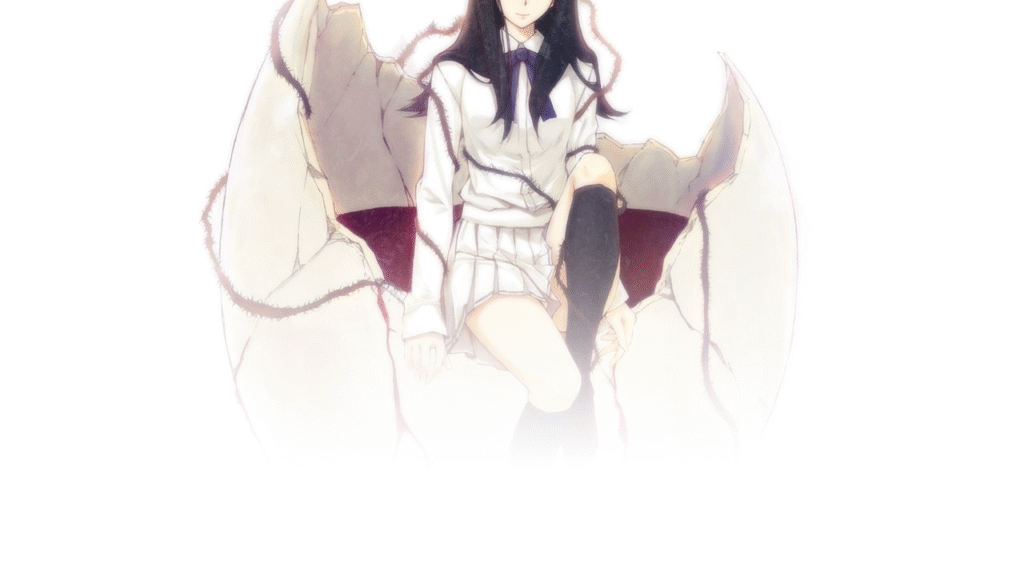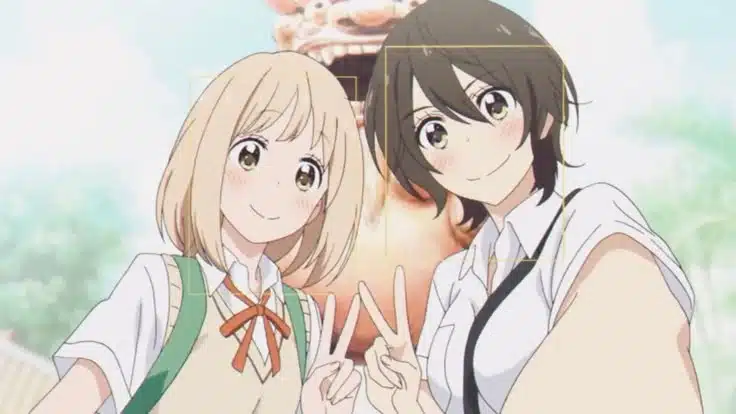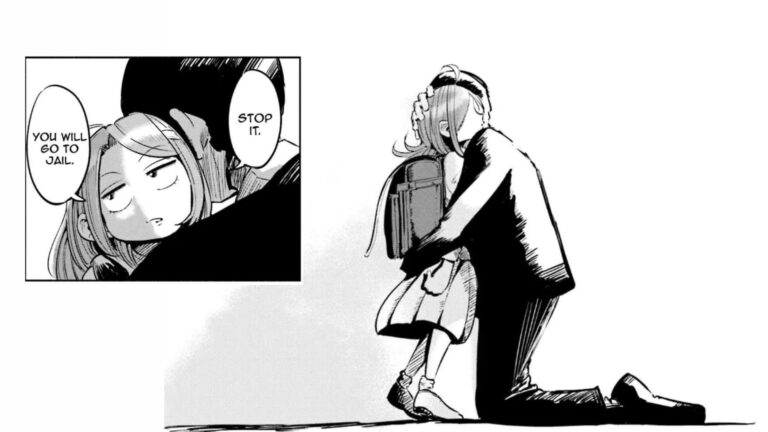Kara no Shoujo (also known as The Shell in the English release) is a three-part murder mystery visual novel series developed by Innocent Grey, set in post-World War II Japan. The story follows private detective Reiji Tokisaka, who is drawn into a series of gruesome murders at the request of his former colleague and close friend in the police force.
As the investigation unfolds, Reiji is approached by a mysterious girl named Toko Kuchiki, who asks him to help her “find her true self.” What begins as a strange request gradually leads Reiji into a deep and disturbing mystery, where madness and tragedy are dancing together.
Table of Contents
Kara no Shoujo: ARTSTYLE
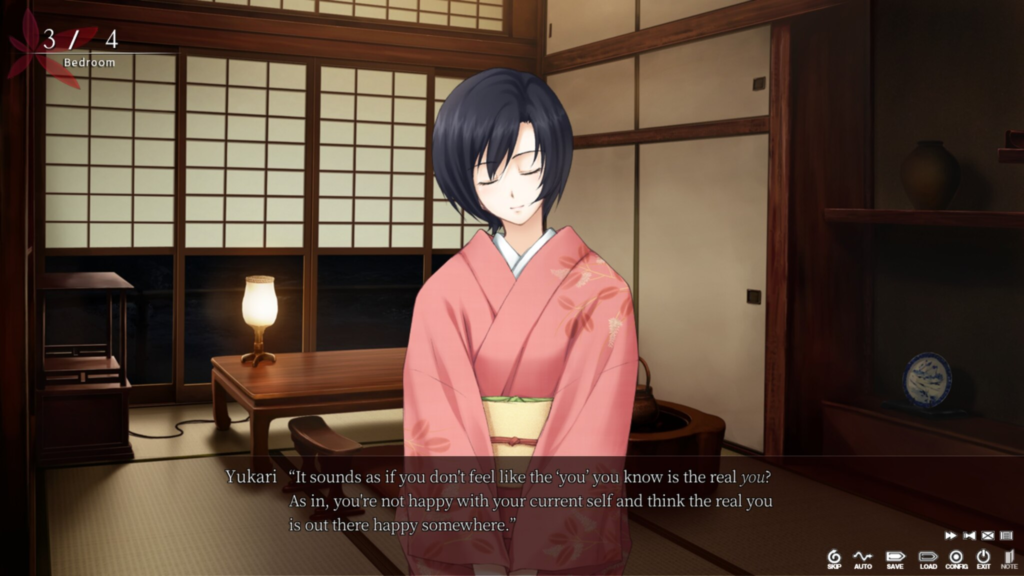
The visual novel catalogue is as vast and diverse as that of anime and manga, offering many titles to recommend. However, what sets the Kara no Shoujo series apart is its unique presentation. Precisely, the art style leaning toward realism which is in contrast to the typical moe aesthetic commonly seen in Japanese media. Characters are drawn with human-like proportions, and despite many of them having black hair, each member of the cast have a distinctive appearance.
The series features hauntingly beautiful and melancholic CGs drawn by Sugina Miki, the artist and director at Innocent Grey. His use of color and detailed facial expressions draws the reader deeply into the story’s emotional atmosphere. In fact, the CGs in Kara no Shoujo are so visually striking and emotionally hitting that they are worthy of an exhibition in a museum.
Also check: A review of Kase-san and Morning Glories (Asagao to Kase-san)
Kara no Shoujo: ATMOSPHERE
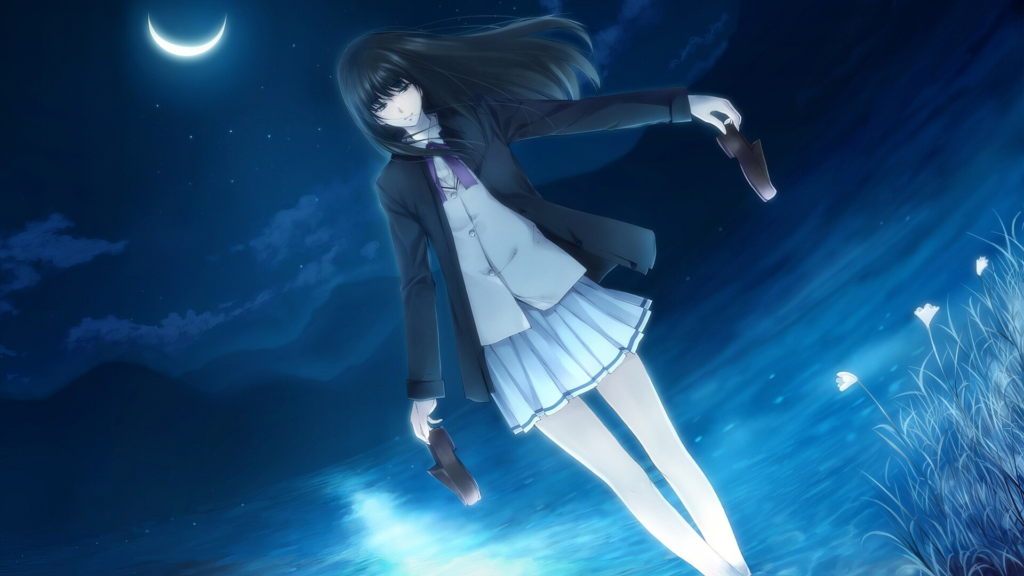
The setting of post-war Japan and the cast’s motivations for living captivate the reader in a melancholic way. We are following people who have lost someone in their lives and are basically ’empty’, but still they are trying to live in this harsh, cruel world, trying to find some meaning in it.
The music by MANYO (who has also been the composer for songs in Mushoku Tensei) elevates the day-to-day space in which our characters are trying to cope with their pain. This very atmosphere attracts the reader that this story is closer to life; i.e., it isn’t sugar and brownies, but rather it’s bitter like a coffee.
Kara no Shoujo: THE DISCREPANCIES

It’s hard to rate and review Kara no Shoujo as a whole because each part involves a different case with a different set of cast, except the protagonist and some side characters, for which it becomes hard to pinpoint what the story is trying to say.
Usually the story in each part revolves around the side cases connecting brilliantly with the main story and are quite engaging, but they often take much time from the story, for which the reader often gets less time allocated to the motivations of the main case and thus starts to lose interest, as the side cases seem to them like a filler. Thus it would be advisable to talk about each part and each concept of the story individually.
Kara no Shoujo Review: THE INFERNO

The first part of the series focuses on Reiji trying to investigate the serial murders of young high school girls by disguising himself as a teacher in an academy. The beginning of the novel is filled with slow-burn slice-of-life aspects of 1950s Japan while we slowly try to discover the mystery behind these murders. As the story progresses, the visual novel makes it pretty clear with the horrific depiction of deaths that what awaits us won’t be happiness but rather a gut-wrenching punch in our hearts.
The mysteries are well-constructed, and it swiftly connects each dot, but with the issue that despite having such a big cast, they are underutilised, and to many readers, the novel’s constant swapping between slice-of-life and dark moments only to get ended in a cliffhanger for later parts to establish might not suit them. After nearly 25 hours of gameplay where without a guide, it’s hard to get to the true end, it might leave them with a bitter taste.
Kara no Shoujo Review: THE PURGATORIO

Objectively better than the first part, which only served more as an introduction to get the sequels working, but still it has its problems which need to get discussed. Part 2 improves on every aspect it should have from the first part. The atmospheric music, which is like the more refined version of the OSTs of the first part, compensates for the story and its vibe well, and the art style is an improved version of the first.
Moving on in the story, the introduced lore and a whole bunch of new characters are handled better here. The murders are more grotesque than before, giving you clues throughout the story which can help the reader in solving the mysteries themselves. It takes a long time for its buildup; it connects the ties and executes it greatly in the latter half of the story.
Though not to be compared with Higurashi, another popular mystery VN, because Higurashi serves as atmospheric horror, while this is a murder mystery, the emptiness of the village setting is depicted quite well.
The issue here is that ultimately the village setting is a subplot, and as a long time is taken working upon the cases involving the village, the reader may forget and even not care about the original mystery we had in the first part until the very last few hours, which, like the first part, leaves us again with more questions and the longing for a sequel. Once again, except for the protagonists, the characterisation of many characters in the cast was left undesired.
Kara no Shoujo Review: THE PARADISO
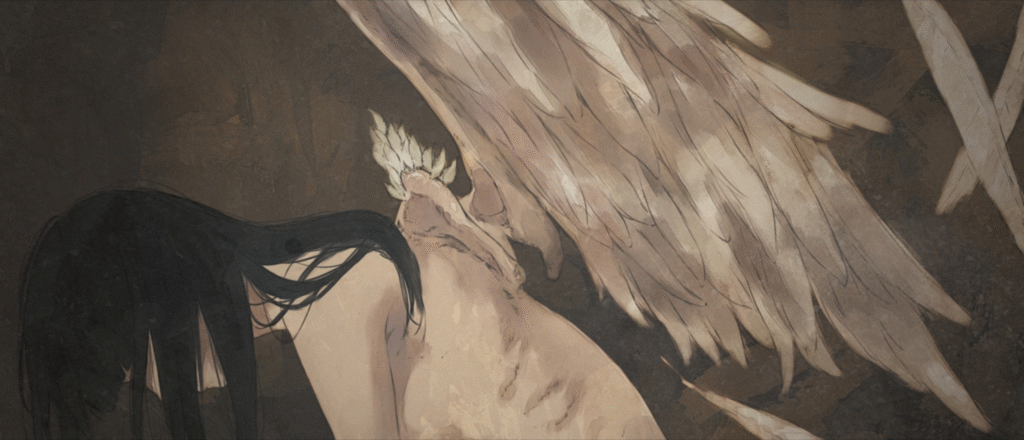
After being left with the emotional scars, the reader finally moves to the third part to end this paranoia once and for all.
The art style gets more refined again than its two parts and develops a very picturesque feel to it. The murders being even more horrifying and the mystery keeping the reader sitting and finishing the case in one phase.
The side case and the cast revolving around it get deep characterisation about all types of feelings involved, such as forbidden love, obsession, the meaning of art and life itself. It even gets objectively better with handling the main characters, who are now emptied with every tragedy striking them from the events of the first two parts, and it depicts their pain and the desire to keep living through the pain in a beautiful and melancholic manner.
The issue of handling the main case sadly was left undesired throughout the story, thus making most of the hours spent feel like a filler, but the true ending and its conclusion, which is a harmonious presentation of music, dialogue and art, make up for those loose points and hours and etch that ending straight into your heart with no regrets left afterwards. The final title screen with the music playing is one of the most beautiful bittersweet endings one can experience in fiction.
Kara no Shoujo Review: 愛 – (A paranoid love of obsession)
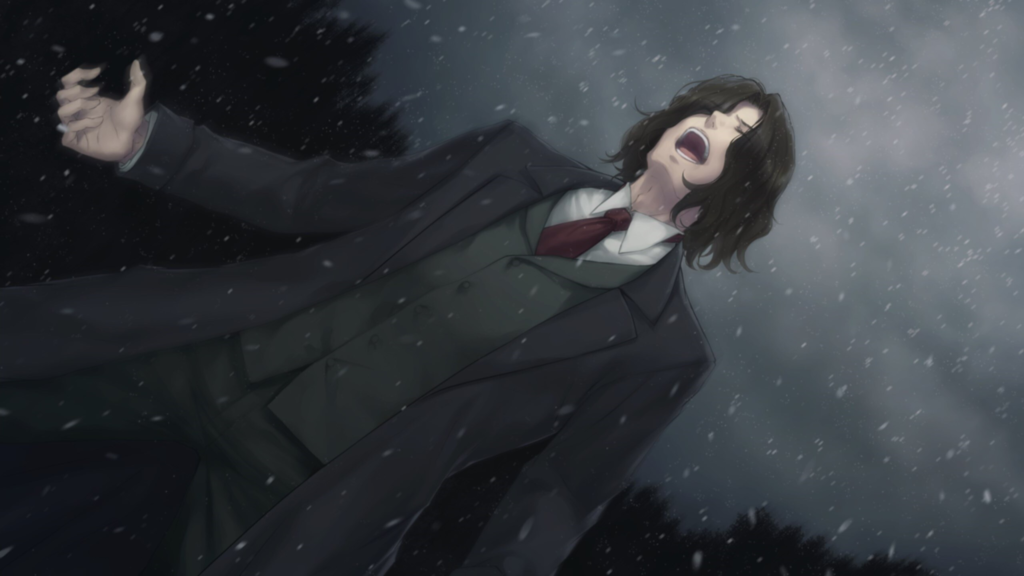
(From this section, there are heavy spoilers discussed, and it is advised to be read only after finishing the entire series.)
In the Japanese language, Kanjis, which are an integral part of it, usually have multiple meanings regarding the context; thus, many writers (a famous example would be Nisio Isin in Monogatari) use these Kanjis in their stories for subtle foreshadowing or to have a deeper meaning than what it looks like on the surface.
Similarly in Kara no Shoujo, the central theme of the story is 愛 (ai), meaning love, with ‘paranoia’ transliterated above it, signifying that this story is about all kinds of love, which turns into an obsession leading to the madness happening in the story.
This series depicts that each of them has different reasons to leave; even the murderers thought their misdoings were something that needed to be done. For Shinji and Sei to make the perfect art, or for Masaki’s sister for her unhealthy love and, most importantly, Makoto’s obsession to be a protector of his faith, each one had their own obsession to keep living.
It’s very interesting how both Reiji and Makoto talk about their obsession with being similar to Dante in Dante’s Comedy had towards Beatrice, with Reiji explaining that unlike Makoto’s Beatrice, which compels him to inject fear into people, Reiji’s Beatrice helped him to keep living despite losing many people dear to him.
Kara no Shoujo Review: NEVER ENDING CYCLE
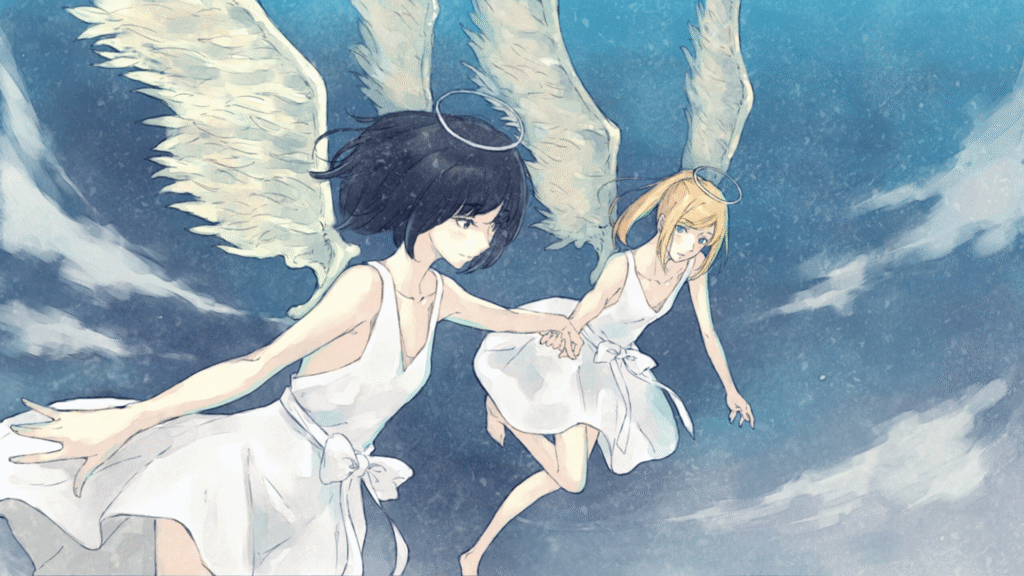
The setting of the story clears up the fact from the very get-go that life is indeed painful, and all it awaits is suffering. It’s a never-ending cycle which only ends with death, so the reader and the characters are asked several times in the story about the life they are living. Is it something worthwhile?
The mythical stories depicted in each part had one thing in common: that life is a cycle, a cycle of suffering and pain. The girl with the egg trying to fix her mother, the girl trying to make the doll fix, and the angel trying to find her own self – all these stories were cycles where the character tries to find hope after failing only to fail again and again and again and again.
These depict that no matter how much you try, your life is bound to end in suffering. It is the truth. And the truth is always bitter. Lies are sweet; everyone loves them. Thus, the characters in the story were using their obsession as a lie to keep on justifying their actions, only to see their perspective go shattered with the power of the bitterness of truth, which is devoid of hope.
Kara no Shoujo Review: FLIGHT OF THE BLUE BIRD
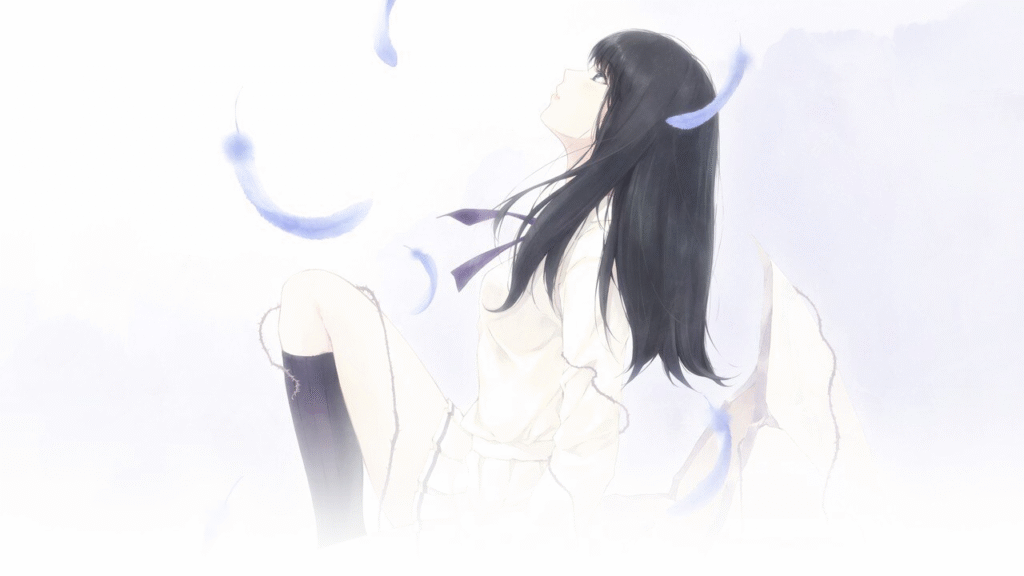
Why is Touko important to the story despite being dead, and why does her painting of a blue bird have significance in the story?
It’s because the blue bird symbolises hope. It challenges the stories of never-ending cycles that despite the girl in the story losing hope again and starting her journey, she will start it again, as she has hope that it will have a meaning, like Albert Camus’ take on the mythical story of Sisyphus, that one must imagine Sisyphus happy; similarly, the reader must imagine the girl in the cycle being happy that it doesn’t matter if her story ends on a bad note, she will start again, as that is the only way she can move forward.
Kara no Shoujo Review: RURI NO TORI
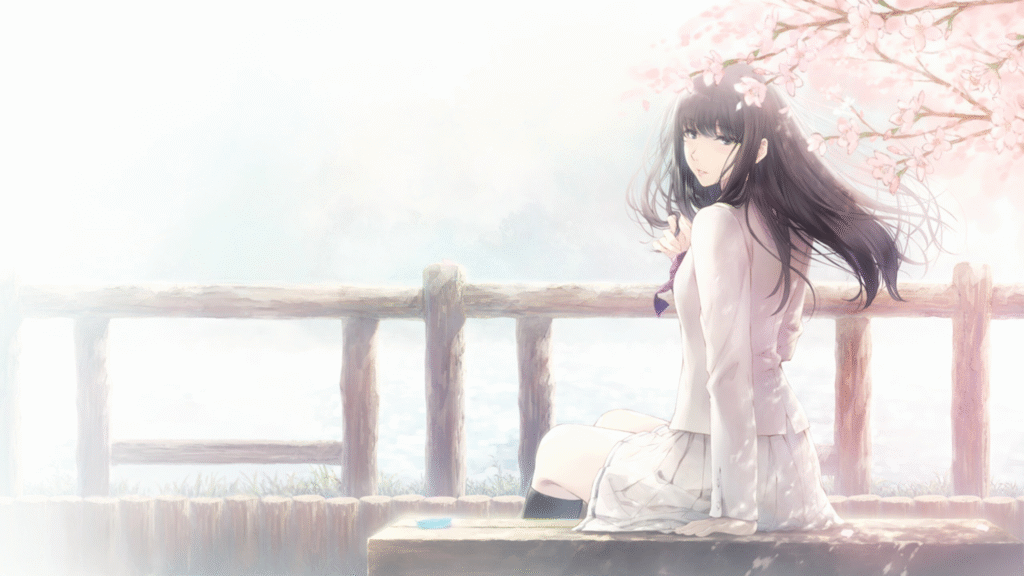
The final shot of the whole series where we see Ruri sitting on the same bench Toko used to sit on while greeting the same way she did to Reiji to find her true self.
It signifies the cycle we have been experiencing from the moment we hit the start button in the first game with the warning from Divine Comedy, Abandon all hope, you who enter here. Still, we moved forward. We were left devastated like Reiji multiple times with the endings of the first two games; still, we moved forward hoping for a good end to achieve some meaning to all this pain and suffering. We are no better than the girl in those mythical stories, but like her, we advanced again and again.
In the final scene, the blue bird took flight, and the cherry blossoms were dancing, perhaps symbolising a new start while we and Reiji were astonished with this sight, tear-eyed but smiling, while the screen faded to black, leaving the reader to their own interpretation. The reader and Reiji might think that everything may go wrong again, but we won’t.
We all will hope for a good end; isn’t it funny? The text gave us clear signs to forget about hope. Still, the reader and the protagonist wish, wish hard for everything to be all right. This wishing is what the flight of the bluebird symbolises; that no matter how much these cycles will go on and on, the urge to take flight again is what makes this journey worthwhile.
Get the entire series on Steam

